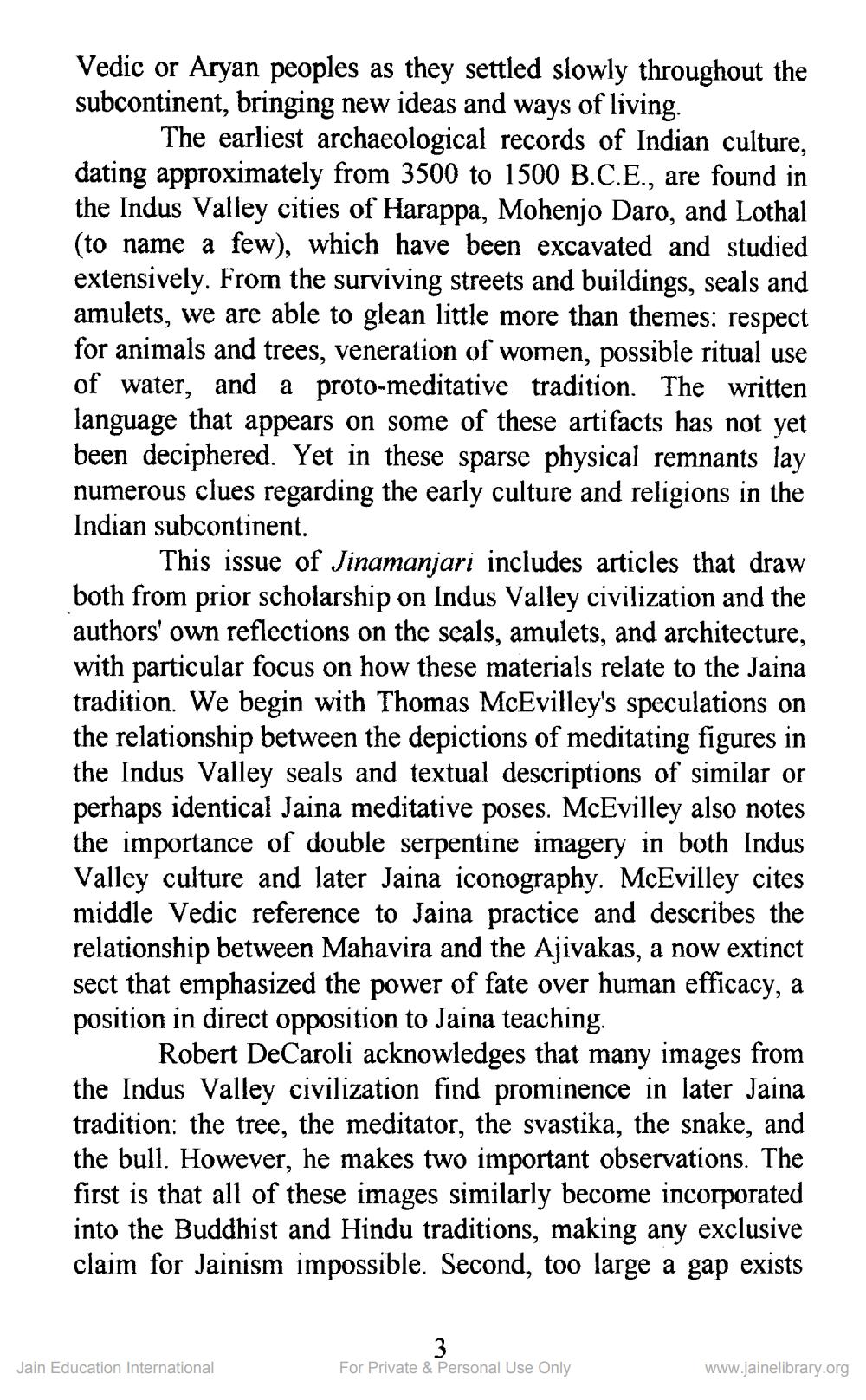________________
Vedic or Aryan peoples as they settled slowly throughout the subcontinent, bringing new ideas and ways of living.
The earliest archaeological records of Indian culture, dating approximately from 3500 to 1500 B.C.E., are found in the Indus Valley cities of Harappa, Mohenjo Daro, and Lothal (to name a few), which have been excavated and studied extensively. From the surviving streets and buildings, seals and amulets, we are able to glean little more than themes: respect for animals and trees, veneration of women, possible ritual use of water, and a proto-meditative tradition. The written language that appears on some of these artifacts has not yet been deciphered. Yet in these sparse physical remnants lay numerous clues regarding the early culture and religions in the Indian subcontinent.
This issue of Jinamanjari includes articles that draw both from prior scholarship on Indus Valley civilization and the authors' own reflections on the seals, amulets, and architecture, with particular focus on how these materials relate to the Jaina tradition. We begin with Thomas McEvilley's speculations on the relationship between the depictions of meditating figures in the Indus Valley seals and textual descriptions of similar or perhaps identical Jaina meditative poses. McEvilley also notes the importance of double serpentine imagery in both Indus Valley culture and later Jaina iconography. McEvilley cites middle Vedic reference to Jaina practice and describes the relationship between Mahavira and the Ajivakas, a now extinct sect that emphasized the power of fate over human efficacy, a position in direct opposition to Jaina teaching.
Robert DeCaroli acknowledges that many images from the Indus Valley civilization find prominence in later Jaina tradition: the tree, the meditator, the svastika, the snake, and the bull. However, he makes two important observations. The first is that all of these images similarly become incorporated into the Buddhist and Hindu traditions, making any exclusive claim for Jainism impossible. Second, too large a gap exists
Jain Education International
For Private & Personal Use Only
www.jainelibrary.org




